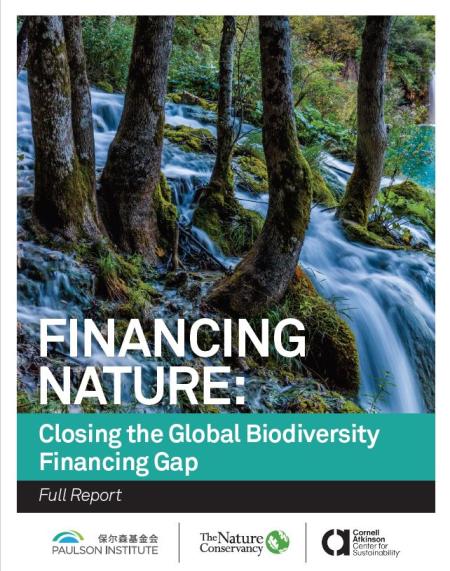
Resource description:
The report identifies a set of nine financial and policy mechanisms that, if implemented and scaled up, can collectively close the biodiversity financing gap. The report goes into detail about the enabling conditions for the implementation and scaling of each of these mechanisms, and it makes detailed recommendations for policy makers, business leaders, and other stakeholders. It makes clear that all governments—from the biodiversity rich nations that may have limited economic means to the established donor countries—must take immediate actions to stem the loss of biodiversity. The immediate intent of this report is to inform the work of national delegations and other negotiators in developing the resource mobilization strategy for the Post-2020 Biodiversity Framework that will be agreed to at the 15th Conference of the Parties (COP15) of the UN Convention on Biological Diversity (CBD) in 2021.
Uses of this resource:
Central Insights
The report provides four central insights:
1. Closing the gap relies heavily upon government actions. Governments need to do more to protect natural capital and put in place a combination of policy reforms to reduce negative impacts on biodiversity, such as reforming harmful agricultural subsidies and reducing investment risk by public and private investors. Governments must also develop new financial innovations to increase available funding for conservation, promoting green investments, and supporting development of nature-based climate solutions, natural infrastructure and biodiversity offsets.
2. The private sector can play a pivotal role, but governments need to pave the way. Governments need to put in place the right regulatory environment, smart incentives and market structures to catalyze financial flows from the private sector into biodiversity conservation.
3. The only way to stop global biodiversity loss is to ensure that nature is appropriately valued in all economies. This will require bold political leadership and transformative policies, mechanisms and incentives that discourage harmful actions and encourage large-scale finance for nature.
4. The gap between the amount currently spent on biodiversity conservation and what is needed is large, but it can be closed. As of 2019, current spending on biodiversity conservation is between $124 and $143 billion per year, against a total estimated biodiversity protection need of between $722 and $967 billion per year. This leaves a current biodiversity
financing gap of between US$ 598 billion and US$ 824 billion per year.
Additional information:
SUGGESTED CITATION:
Deutz, A., Heal, G. M., Niu, R., Swanson, E., Townshend, T., Zhu, L., Delmar, A., Meghji, A., Sethi, S. A., and Tobin-de la Puente, J. 2020. Financing Nature: Closing the global biodiversity financing gap. The Paulson Institute, The Nature Conservancy, and the Cornell Atkinson Center for Sustainability.
https://www.nature.org/en-us/what-we-do/our-insights/reports/financing-nature-biodiversity-report/
Licence:
- Public/open source
- financingnaturefullreport091520.pdf (5.3 MB)